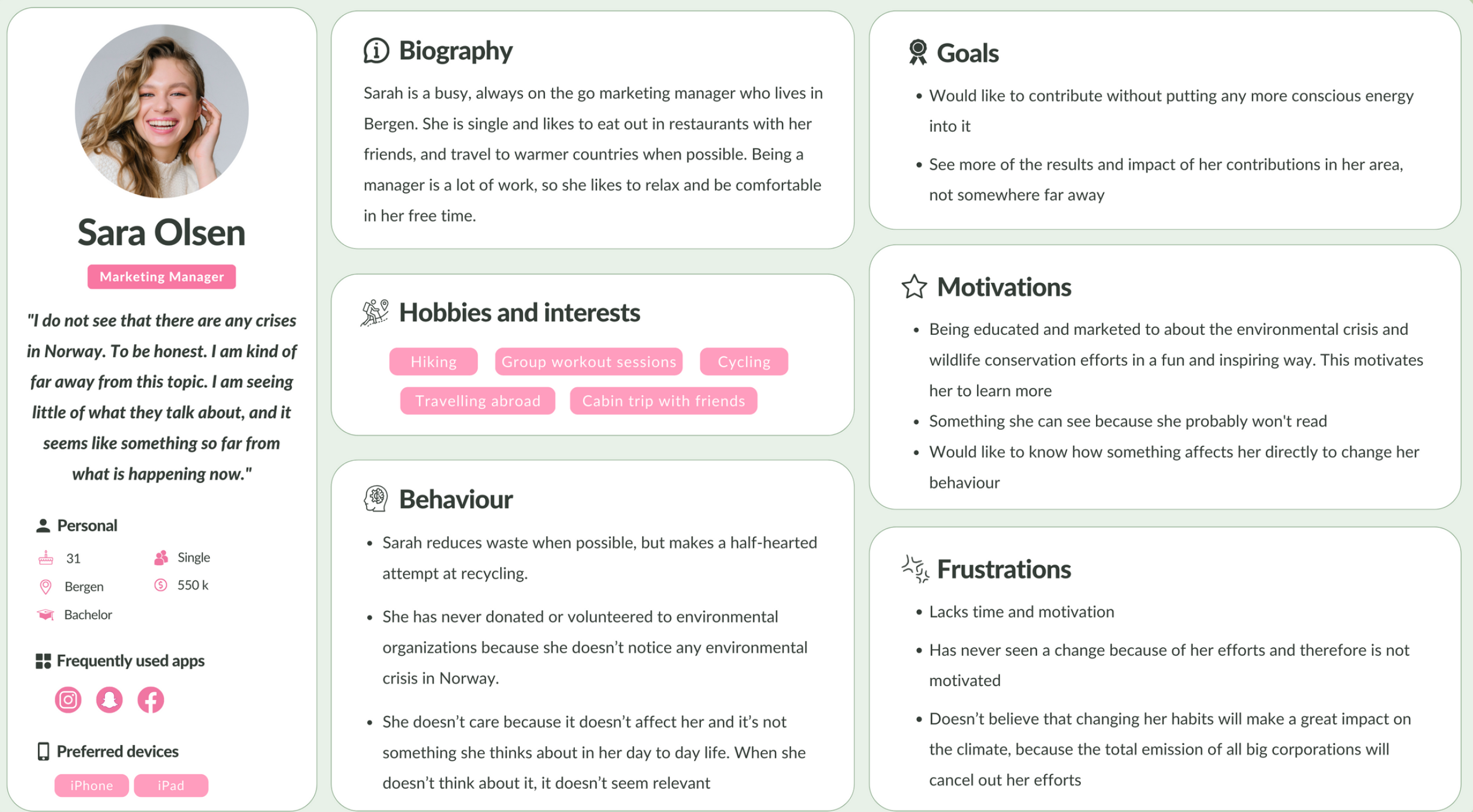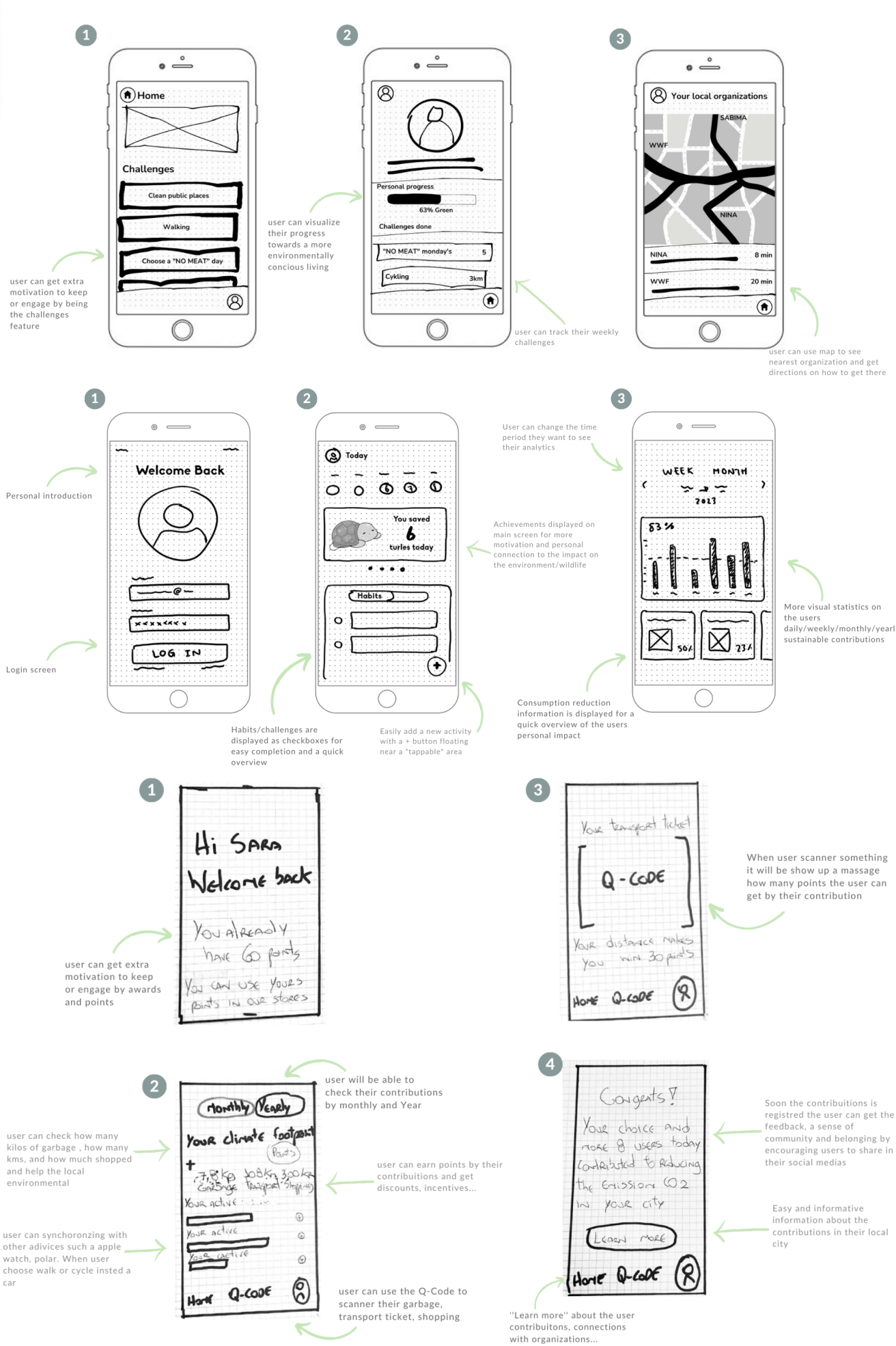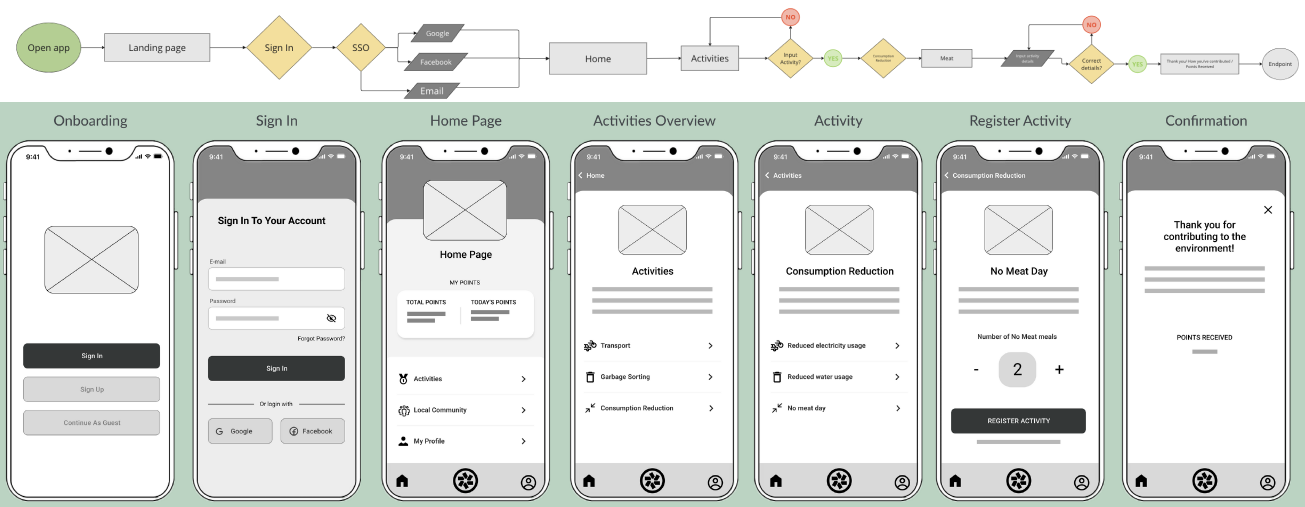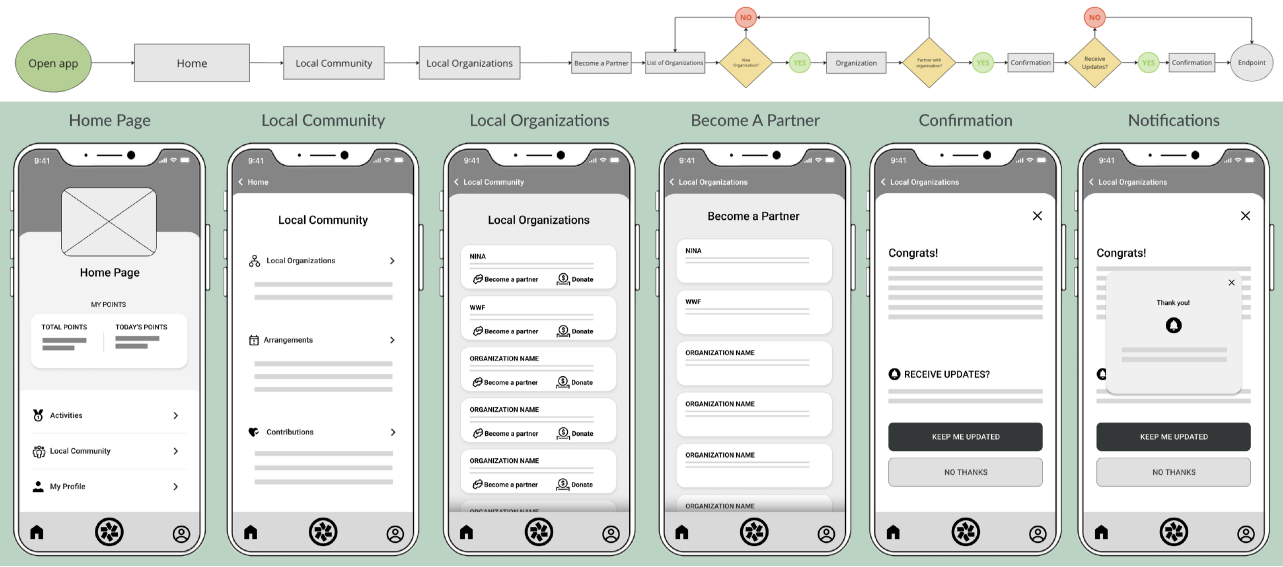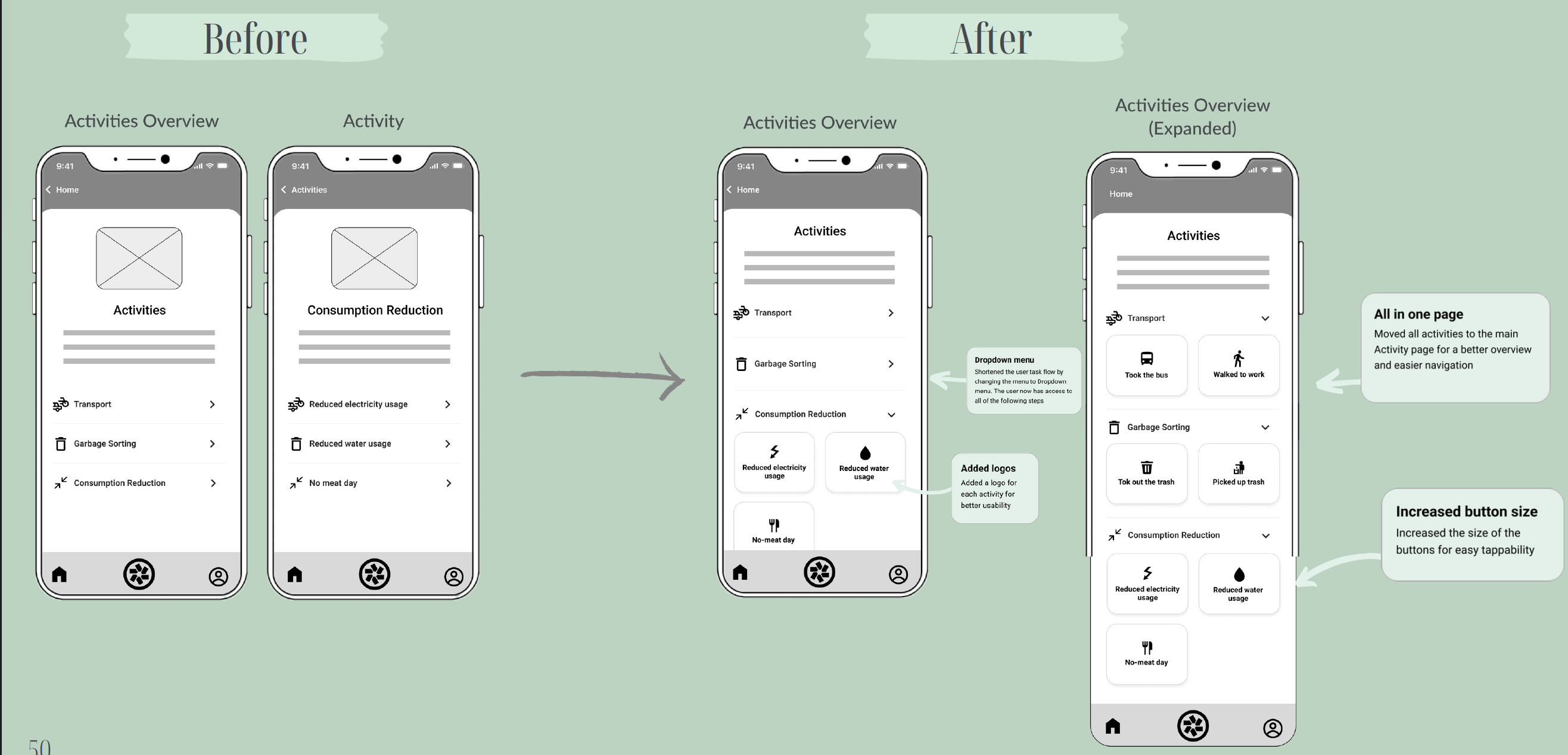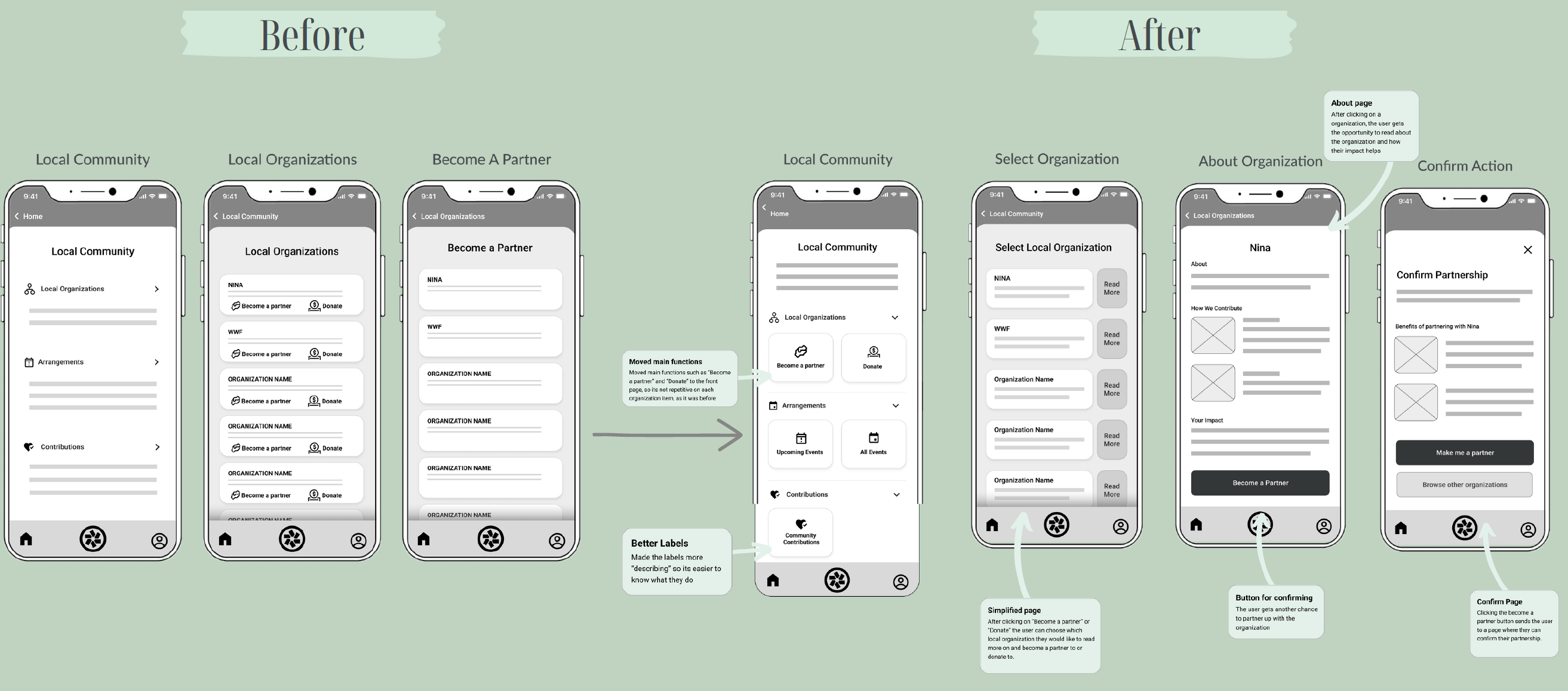terry app
Supporting people in making eco-friendly choices through daily sustainable actions by rewarding users, collaborating with local organizations, for nature conservation, and offering personalized recommendations based on user profiles
Conservationists work to raise awareness, but public attention is often limited. Technology can help by empowering people to make a difference. Many adults struggle to grasp the importance of environmental conservation due to a lack of accessible, informative tools.
Role
UX/UI Designer
team
+ 2 UX/UI Designer
Duration
4 Weeks
status
Built to learn, not launched yet
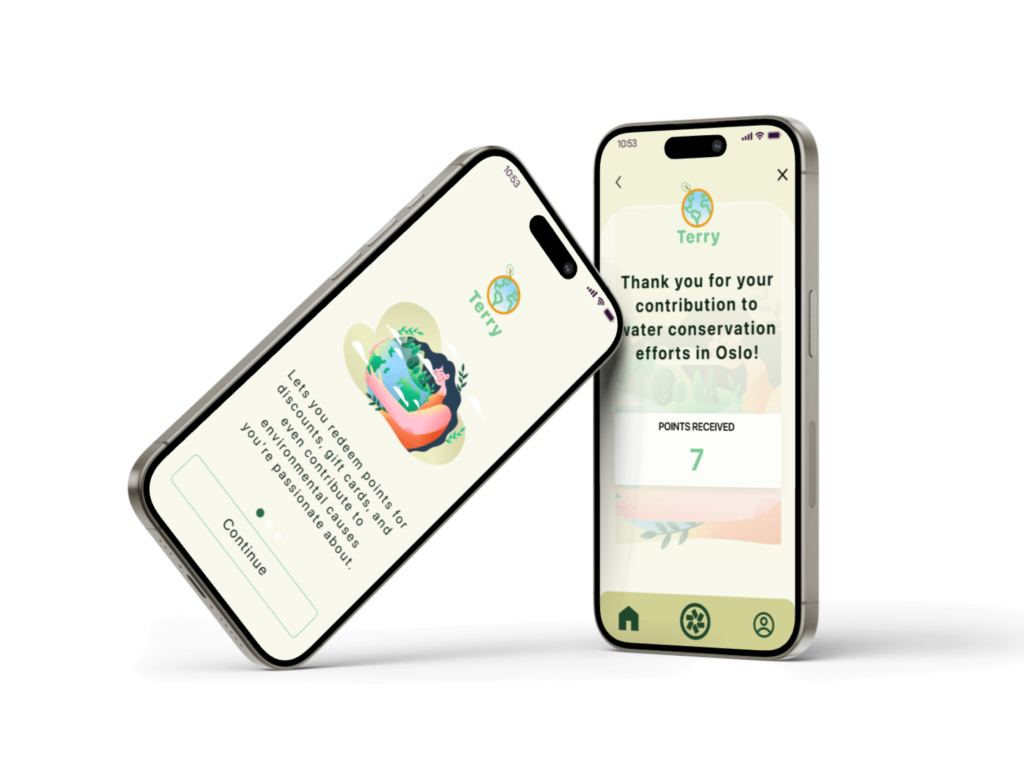
Deliverables
- Competitive Analysis
- Survey
- User Interview
- Affinity Mapping
- Empathy Mapping
- Persona
- Storytelling
- Problem Statment
- Sketches
- User flow
- Usability Test
- Documentation
- Presentation
Adults in Norway lack accessible tools to understand and contribute to environmental conservation
We conducted research and user surveys to identify key challenges for busy adults in Norway regarding environmental conservation and wildlife preservation. Our findings highlighted issues affecting individuals’ engagement, understanding, and ability to contribute effectively to these crucial causes.
“I try to do small things every day, like recycling and using reusable bags, but I often wonder if these actions are actually significant.”
— From User Interview
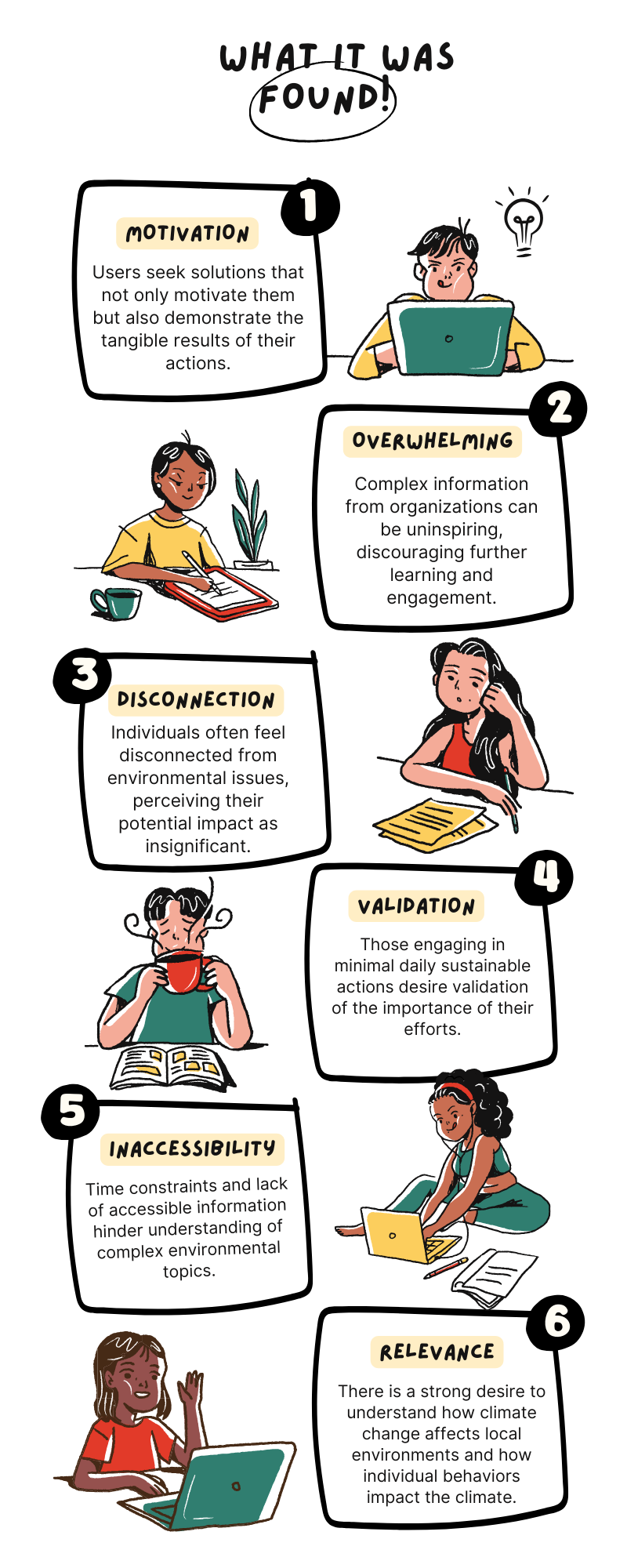
During our interviews, we asked participants about their understanding of environmental issues, daily sustainable actions, and motivations for ecological engagement. This better reflects the environmental focus of your research and the insights we’ve gathered from participants. It touches on the main themes of environmental and engagement awareness for adults in Norway.
Activities and outputs
5 user interviews
Affinity mapping
Empathy mapping
"Invisible Impact"- adults lay hands-on with environmental disconnect
After analyzing user interviews, we found that many adults feel disconnected from environmental issues and need better understanding of how their actions impact the environment. They desire visual representations of their environmental impact to stay motivated. Our findings emphasize the urgent need for tools that bridge this disconnect, making environmental impact more tangible and motivating. The data highlight the need for accessible tools that connect individuals to local environmental impacts and visualize the significance of their actions.
“I’m looking for a solution that encourages me to take action and shows me the real-world results of my efforts. That would keep me going.”
— From User Interview
SARA, 31, is a busy marketing manager in Berge who wants to make a positive environmental impact but needs help to see the results of her efforts. She recycles diligently and tries to reduce her carbon footprint, yet feels disconnected from larger environmental issues. Sara represents our target user: an environmentally aware adult seeking tangible ways to contribute and understand their impact on local and global ecosystems.
Activities and outputs
Storytelling
Persona
Accelerating progress through collaborative sketching
Sara, a busy professional, was eager to contribute to environmental conservation but needed help finding the time and motivation.
To tackle this issue, we arranged a collaborative workshop. Using scenario-mapping workshops, we ensured that the focus remained on the users’ needs. To increase motivation further, we introduced incentives such as points, shared accomplishments, and helpful tips.
Our sustainable activity tracker empowers users to make a real difference in their local and global environments. It provides incentives and insights to motivate and inform users about eco-friendly efforts. The tracker aims to bridge the gap between individual actions and the bigger picture by tracking daily sustainable activities and visualizing collective impact. It also focuses on building a community of eco-conscious individuals to create a ripple effect. These sketches represent the first steps in bringing this vision to life.
The wireframe depicts a user’s profile page, showing their accumulated points and achievements. Points are earned through various daily sustainable activities, such as reducing meat consumption, recycling, reducing energy use, and participating in community clean-ups. As users complete these actions, their point total increases, providing a tangible sense of progress and impact.
The wireframe displays a user exploring the “Local Partners” section, where they can connect with various organizations, from wildlife conservation groups to renewable energy advocates. Users can access news updates, event listings, and educational resources by tapping into these partnerships. The wireframe showcases how users can easily navigate to specific partner organizations, read their latest updates, and participate in community events or volunteer opportunities.
Activities and outputs
Sketches
User flow
Mid-fidelity wireframes
Assumptions designed
Detour! Testing our Wireframes
To ensure our sustainable activity tracker meets the needs of adults in Norway, we tested two key wireframes showcasing features to bridge the gap between daily actions and environmental issues. Through testing, we prioritized design changes to enhance user experience using triangular metrics. This user-centric approach empowers Norwegians to visualize their environmental footprint, understand the impact of their actions, and contribute to conservation efforts.
“I like earning points for my sustainable actions, but the dropdown menu was confusing. It was difficult to the contribution”
— Participant 3
“I think it would be great to connect with local organizations through the sustainable activity tracker. I had trouble finding the partner section. When I did find the partner updates, there was a lot of information to take in. I think it could be easier to digest.”
— Participant 4
Activities and outputs
Usability Test
Design Alterations
key learnings
1️⃣ The research shows that many people don’t get involved in environmental stuff because it’s hard to find the correct information and resources. But the study also reveals that an app can inspire people who care about the environment by showing how their daily actions can make a difference for nature and wildlife.
2️⃣ Users want to see the impact of their actions and feel motivated to continue making a difference. The Terry app aims to visualize environmental impact, providing users with a sense of accomplishment and progress. By doing so, the app encourages users to continue taking small sustainable actions that collectively make a significant difference.
3️⃣ Users want to see the impact of their actions and feel motivated to continue making a difference. The Terry app aims to visualize environmental impact, providing users with a sense of accomplishment and progress. By doing so, the app encourages users to continue taking small sustainable actions that collectively make a significant difference.
KPIs
1️⃣ Tracking app usage.
2️⃣ User engagement in environmental activities
3️⃣ Environmental impact indicators like energy savings, waste reduction, and increased consumption of plant-based foods.
Next up
storefront
E-COMMERMECE WEB PROGRESSION APP
Designing checkout flow for non-registered users in an e-commerce app
Streamlining the checkout process for non-registered users and building a simplified workflow for designers and develops.
